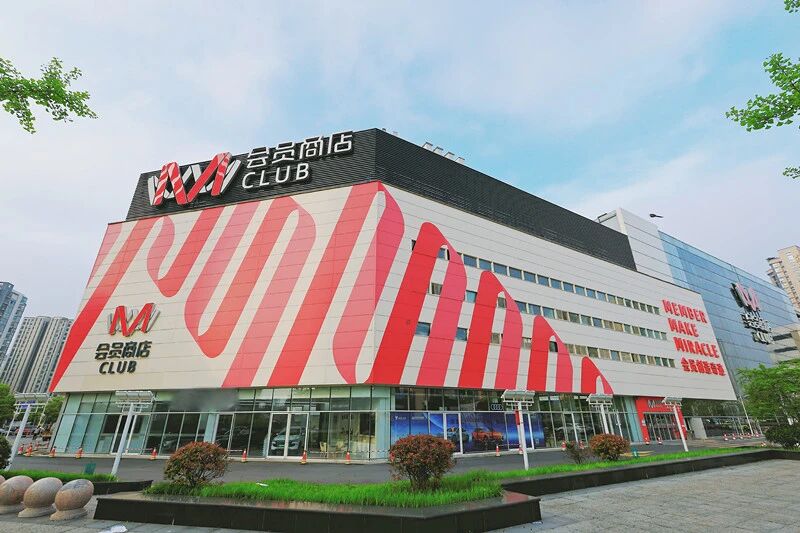Turning Losses into Profits by ‘Saving’: How RT-Mart and Yonghui Took Different Paths
When Sam’s Club, OLE, Pang Donglai, and even Yonghui become hot topics of public attention, the positioning of traditional supermarkets is undergoing some extremely subtle but irreversible changes.Years ago, large supermarkets were often called “hypermarkets,” a title they earned due to their vast space, rich product assortment, and wide selection. However, at some point, supermarket brands such as Sam’s Club and Pang Donglai began to shake off the stereotypical image of a hypermarket and have become widely recognized as “premium supermarkets.”It is clear that premium supermarkets are quite different from the hypermarket model. While hypermarkets are known for having a large volume of products, low prices, and open spaces, relying on extreme cost management to maintain competitive edges, premium supermarkets focus on product selection, supply chain management, and customer service to create a good reputation. They do not emphasize low prices but rather the quality of the products.In the public’s mind, RT-Mart has long been seen as the “king of hypermarkets.” As premium supermarkets rise to prominence, can RT-Mart, once the king of hypermarkets, regain its former glory?Gao Xin Retail Turns Losses into Profit by ‘Saving’ Costs.
According to reports, in the 2025 fiscal year (April 1, 2024 – March 31, 2025), Gao Xin Retail’s revenue was 71.552 billion yuan, a slight decrease of 1.4% year-on-year; however, its net profit reached 386 million yuan, a notable turnaround from the previous losses.However, the return to profitability wasn’t easy for Gao Xin Retail. In the 2022 fiscal year, the company suffered a loss of 826 million yuan, and in 2024, another massive loss of 1.6 billion yuan occurred. This report marks the first after Alibaba sold its stake in Gao Xin Retail. In January of this year, Alibaba Group announced that it had sold its entire stake in Gao Xin Retail, totaling 78.7% of the shares. Following this, there were changes in the company’s executive leadership, and Hua Yuning, CEO of Dehong Capital, became the Chairman of Gao Xin Retail’s Board, with Shen Hui appointed as CEO.After Alibaba handed over the reins, Gao Xin Retail found itself in a tough operating situation. Lin Xiaohai took over as CEO in late 2020, right as the pandemic began. The company’s business struggled but began a difficult adjustment journey. Despite the losses, Gao Xin Retail managed to return to profitability by focusing on low prices, cost-cutting, and high-efficiency operations.Some analysts pointed out that Gao Xin Retail’s profitability came from significant cost-saving measures.

Despite a decline in both revenue and gross profit margin, the company’s gross profit for the fiscal year was 17.236 billion yuan, a decrease of 4.0%, and its gross margin dropped 0.6 percentage points. However, by drastically cutting expenses, Gao Xin Retail managed to report profits.Notably, Gao Xin Retail reduced its sales and marketing expenses by 16.2%, saving 2.946 billion yuan. Moreover, the company reduced staff costs in stores by 981 million yuan, cut impairment losses on stores with negative cash flow by 1.148 billion yuan, and reduced administrative costs by 24%. These “cost-cutting” measures reflect the company’s effort to slim down its operations.Gao Xin Retail’s Future Direction.The company’s board, now under new leadership, has clearly outlined its future development strategy. Chairman Hua Yuning emphasized that in an increasingly competitive retail industry, foot traffic is the foundation of Gao Xin Retail’s development. The company aims to establish a “Daily Low Price + Community Life Center” model, enhancing product offerings while optimizing store layouts and improving customer experience.In terms of geographical expansion, as of the end of the fiscal year, Gao Xin Retail had 505 stores covering 207 cities, an increase from the 472 stores in fiscal year 2024. It plans to continue expanding in lower-tier cities.
With over 75% of its stores located in third- and fourth-tier cities, Gao Xin Retail is focusing on the “down-market” segments.Gao Xin Retail’s revenue growth from existing stores was 0.6%, with its “RT-Mart Super” business model showing a 5.9% increase in same-store sales, outperforming other business models under the company.”RT-Mart Super,” a new store format, operates between 1,500 and 3,000 square meters and offers a curated selection of 5,000-8,000 products, with over 1,000 items priced at long-term low prices. The model is similar to a “superstore” concept, akin to the “super species” launched by Hema or Yonghui, yet it faces challenges in replicating Hema’s success.Yonghui and RT-Mart Take Different Paths.Unlike RT-Mart’s traditional “low-price strategy,” Yonghui has chosen a different route, focusing on “quality retail” after consulting with Pang Donglai. In March 2024, Yonghui Supermarket, under the guidance of Pang Donglai’s team, began adjusting its nationwide stores, which led to increased customer traffic, improved brand reputation, and better sales performance. By the end of the first quarter of 2025, the adjusted stores achieved stable profitability.Despite this, Yonghui is still facing a massive loss of 1.465 billion yuan by the end of 2024, but the company expects to see positive results from its quality-focused retail strategy. This transition highlights Yonghui’s shift towards offering a more refined shopping experience, compared to RT-Mart’s cost-cutting approach.Looking ahead, the future success of Yonghui’s “quality supermarket” model versus RT-Mart’s “low-price strategy” remains to be seen. However, both companies face challenges in adapting to a rapidly changing retail landscape.